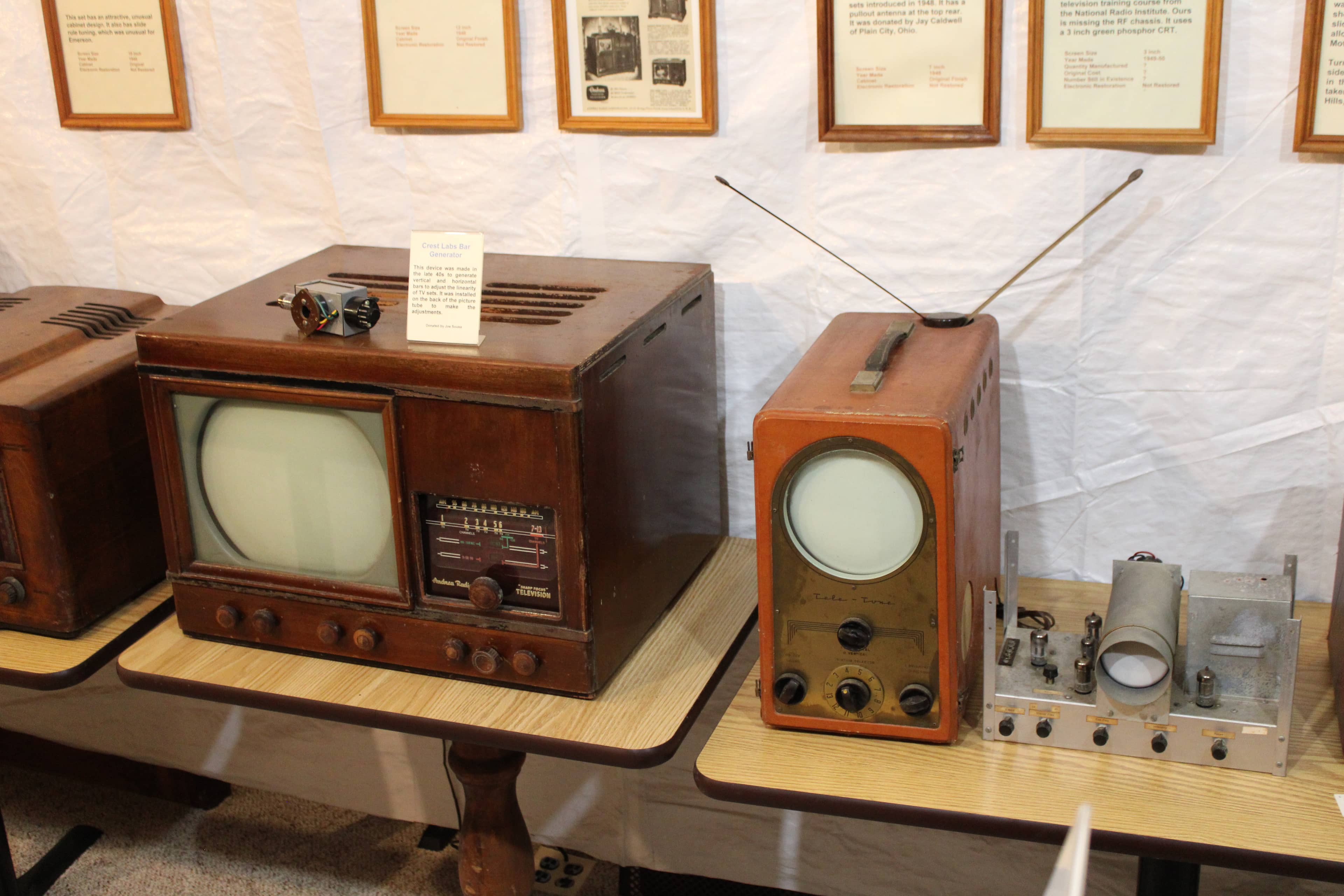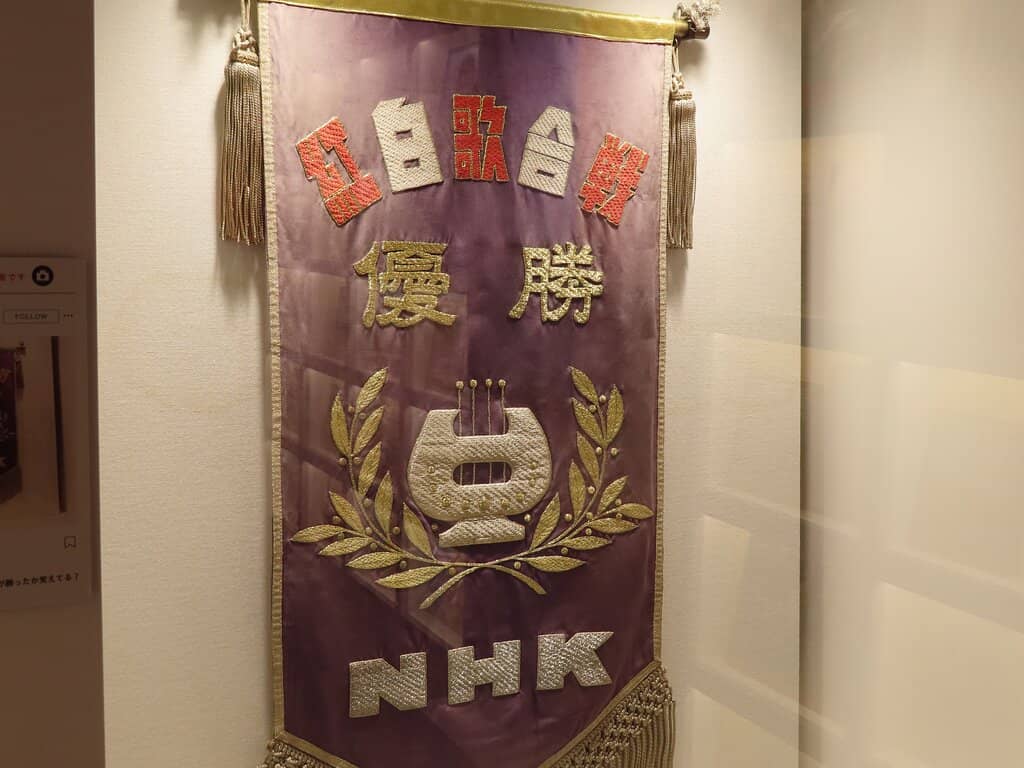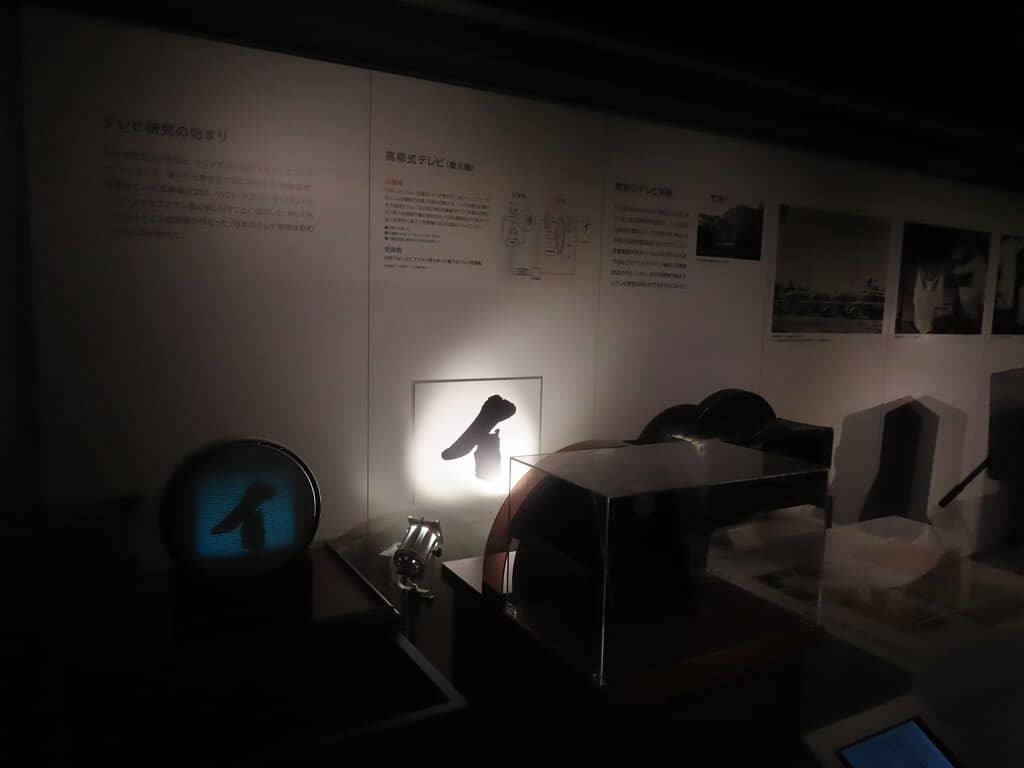
NHK Museum of Broadcasting
Explore Japan's broadcasting history from early radio to digital TV. Free admission!

Highlights
Must-see attractions

Social
From TikTok & Reddit
Best Time
Fewer crowds, more space to explore

NHK Museum of Broadcasting
Best Time
Fewer crowds, more space to explore

Highlights
Must-see attractions
Explore Japan's broadcasting history from early radio to digital TV. Free admission!
"Amazing underrated museum about Japanese broadcasting history, but actually about Japanese history."

Free Entry! 🎉
Admission is completely free, making it a fantastic value for exploring Japanese media history.
Translate with Google Lens 📱
Most signs are in Japanese, but Google Lens on your phone is a lifesaver for translations.

Highlights
Discover the most iconic attractions and experiences

Early Radio & Broadcast History
Third Floor
Explore vintage radio sets, microphones, and transmitters charting the dawn of Japanese broadcasting.

Emperor's Surrender Broadcast
Third Floor
See the original record and handwritten notes of the Emperor's 1945 broadcast ending WWII.

Interactive News Desk
Second Floor
Step behind the scenes to try reading the news or presenting the weather like a pro.
Plans like a pro.
Thinks like you
Planning Your Visit
Free Admission, Big Insights
Bridging Language Gaps
Best Times
Insider Tips
from TikTok, Instagram & Reddit
Trip Report - A museum a day in Tokyo and Osaka
Free Entry! 🎉
Admission is completely free, making it a fantastic value for exploring Japanese media history.
Translate with Google Lens 📱
Most signs are in Japanese, but Google Lens on your phone is a lifesaver for translations.
Plan for 1-2 Hours ⏳
Give yourself enough time to explore the extensive exhibits on broadcasting history.
Quiz for Prizes! 🎁
With a little Japanese, you can participate in museum quizzes for a chance to win gifts.
Tips
from all over the internet
Free Entry! 🎉
Admission is completely free, making it a fantastic value for exploring Japanese media history.
Translate with Google Lens 📱
Most signs are in Japanese, but Google Lens on your phone is a lifesaver for translations.
Plan for 1-2 Hours ⏳
Give yourself enough time to explore the extensive exhibits on broadcasting history.
Quiz for Prizes! 🎁
With a little Japanese, you can participate in museum quizzes for a chance to win gifts.
Focus on the 3rd Floor First ⬆️
Start on the third floor for a chronological journey through broadcasting's past.
What Travellers Say
Reviews Summary
Visitors praise the NHK Museum of Broadcasting for its fascinating historical exhibits and, notably, its free admission. While the language barrier is a common point, many find solutions with translation apps. The interactive elements and the chance to see significant historical broadcasts make it a worthwhile visit for those interested in media and Japanese history.
"A fascinating museum that is particular relevant in 2025, which marked NHK’s centenary. Start on the third floor to see a history of broadcasting, including numerous early radio sets, microphones and transmitters. Captions are in English on little screens embedded in the displays of each section. The timeline moves to TV, video and satellite broadcasting, and on the second floor are genre-focused exhibits, such as music and drama (captions in Japanese but Google Lens will help). And it’s free!"
Kevin Young
"Amazing underrated museum about Japanese broadcasting history, but actually about Japanese history. With minor Japanese language knowledges you can ask for some museum quiz and get some nice presents.
The entry btw is free!"
Solo Kate
"Not too big museum about the history of TV in Japan. Not too much English but interesting. We enjoyed the practical exhibits where you could have a go reading the news and presenting the weather."
C_C
What People Like
What People Dislike
Frequently Asked Questions
🚇 🗺️ Getting There
The NHK Museum of Broadcasting is easily accessible via public transport. It's a short walk from NHK Front Station on the NHK Line, or a slightly longer walk from Shibuya Station, which is a major hub served by multiple JR and private railway lines. Many visitors find it convenient to combine a visit with exploring the vibrant Shibuya district.
While there isn't dedicated visitor parking directly at the museum, several public parking garages are available in the surrounding Shibuya area. These can be a bit pricey, so using Tokyo's efficient public transportation system is generally recommended for ease and cost-effectiveness.
The Japan Rail Pass is valid on JR lines, which can take you to Shibuya Station. From Shibuya, you can either walk to the museum or transfer to a local line. Check the specific JR lines available from your starting point to Shibuya.
The museum is within walking distance of Shibuya Station, which is served by the Ginza Line, Hanzomon Line, Fukutoshin Line, Tokyu Den-en-toshi Line, Tokyu Toyoko Line, and Keio Inokashira Line. This makes it very convenient to reach from various parts of Tokyo.
Yes, the NHK Museum of Broadcasting is generally accessible for wheelchairs. Elevators are available to access different floors, and pathways are designed to accommodate visitors with mobility needs. It's always a good idea to confirm specific accessibility details with the museum if you have particular requirements.
🎫 🎫 Tickets & Entry
The most fantastic aspect of the NHK Museum of Broadcasting is that admission is completely free! You can explore all the exhibits without purchasing a ticket, making it an excellent budget-friendly option for travelers.
No, advance booking is not required for the NHK Museum of Broadcasting as entry is free. You can typically walk in and explore the exhibits at your own pace during opening hours.
The museum's opening hours are generally from 10:00 AM to 6:00 PM, with the last admission usually around 5:30 PM. However, it's always advisable to check the official NHK Museum of Broadcasting website for the most up-to-date hours, as they can vary due to holidays or special events.
The museum is typically closed on Mondays and during the New Year holidays. It's recommended to verify the exact closing days on their official website before your visit to avoid any disappointment.
The NHK Museum of Broadcasting occasionally hosts special exhibitions that delve deeper into specific aspects of broadcasting history or technology. Information about these events is usually available on their official website.
🎫 🧭 Onsite Experience
The museum showcases the history of Japanese broadcasting from the 1920s to the digital age. You'll find early radio equipment, vintage televisions, exhibits on famous dramas and music programs, and interactive displays where you can try reading the news.
Yes, the NHK Museum can be engaging for children, especially the interactive exhibits like the news desk. The visual displays of old technology might also spark their curiosity about how things used to work.
Most visitors spend between 60 to 120 minutes exploring the museum. This allows ample time to view the exhibits on the third floor and explore the genre-specific displays on the second floor.
While official guided tours might not be regularly scheduled in English, the museum's layout is intuitive. The English captions on small screens embedded in displays provide good context. For deeper insights, consider using translation apps.
Photography is generally permitted for personal use in most areas of the NHK Museum of Broadcasting, but it's always best to look for specific signage indicating any restrictions, especially in areas with delicate artifacts or special exhibitions.
📸 📸 Photography
Capture the impressive collection of vintage radio and television sets, especially the early models. The interactive news desk offers a fun chance for a unique photo. Don't miss the historical significance of the Emperor's surrender broadcast display.
Generally, personal photography is allowed. However, always be mindful of any 'no photography' signs, particularly around sensitive exhibits or if flash photography could damage artifacts.
A standard camera or smartphone is sufficient. Given the indoor setting and potentially dim lighting in some areas, a camera with good low-light performance or a lens with a wide aperture can be beneficial. A small tripod might be useful if allowed, but check regulations first.
Tripod usage policies can vary. It's best to check with museum staff or look for signage. If tripods are restricted, a monopod or simply stabilizing your camera against a surface might be alternatives.
The sheer volume and variety of historical broadcasting equipment, from massive early transmitters to sleek mid-century televisions, are visually striking. The interactive news desk also provides a dynamic and engaging subject for photos.
For Different Travelers
Tailored advice for your travel style
👨👩👧 Families with Kids
While most signage is in Japanese, the visual nature of the exhibits and the interactive elements can still be understood and enjoyed by younger visitors. Parents can use translation apps like Google Lens to help explain specific displays if their children show particular interest. The museum's free admission also makes it an excellent, budget-friendly option for a family outing in Tokyo. Plan for about 1-2 hours to keep it engaging without overwhelming younger attention spans.
💡 Tech Enthusiasts & History Buffs
History buffs will appreciate the historical context provided, especially the exhibits detailing pivotal moments in Japanese history as reported through NHK. The display of the Emperor's surrender broadcast is a particularly significant artifact. While the language barrier exists, the sheer volume of physical artifacts and the chronological presentation offer a rich learning experience, enhanced by translation tools. The free entry makes it an accessible deep dive into a crucial aspect of 20th-century Japan.
Deep Dives
In-depth insights and expert knowledge
A Journey Through Japanese Broadcasting History
As you move through the exhibits, the timeline progresses to the advent of television, video, and satellite broadcasting. The museum meticulously documents NHK's role as Japan's national broadcaster, highlighting key moments and innovations. A particularly poignant exhibit is the display of the Emperor's radio broadcast that announced Japan's surrender in 1945, complete with the handwritten notes for the speech. This section offers a profound glimpse into a pivotal moment in world history, viewed through the lens of Japanese media.
Beyond the technological and historical milestones, the museum also explores the cultural impact of broadcasting. The second floor features genre-focused exhibits, delving into areas like music and drama. While these sections might have less English text, tools like Google Lens can help unlock their stories. The interactive elements, such as the opportunity to try reading the news or presenting the weather, add a fun, hands-on dimension to the learning experience, making the history of Japanese broadcasting come alive for visitors of all ages.
Navigating the NHK Museum: Tips for International Visitors
Despite the language challenge, the museum is considered a must-see for those interested in history or technology. The free admission is a significant draw, and the depth of information available, even with translation assistance, is substantial. Visitors often suggest allocating 60 to 120 minutes for a thorough exploration, allowing time to appreciate the historical artifacts and understand the context of Japanese broadcasting.
For those looking to engage further, some visitors mention participating in museum quizzes where, with a little Japanese knowledge, you can win small prizes. This adds an element of fun and interaction. Ultimately, the NHK Museum of Broadcasting offers a unique and valuable perspective on Japan's modern history through its media, and with a few smart tools, international visitors can fully enjoy and learn from its extensive collection.






Social
from TikTok, Instagram & Reddit